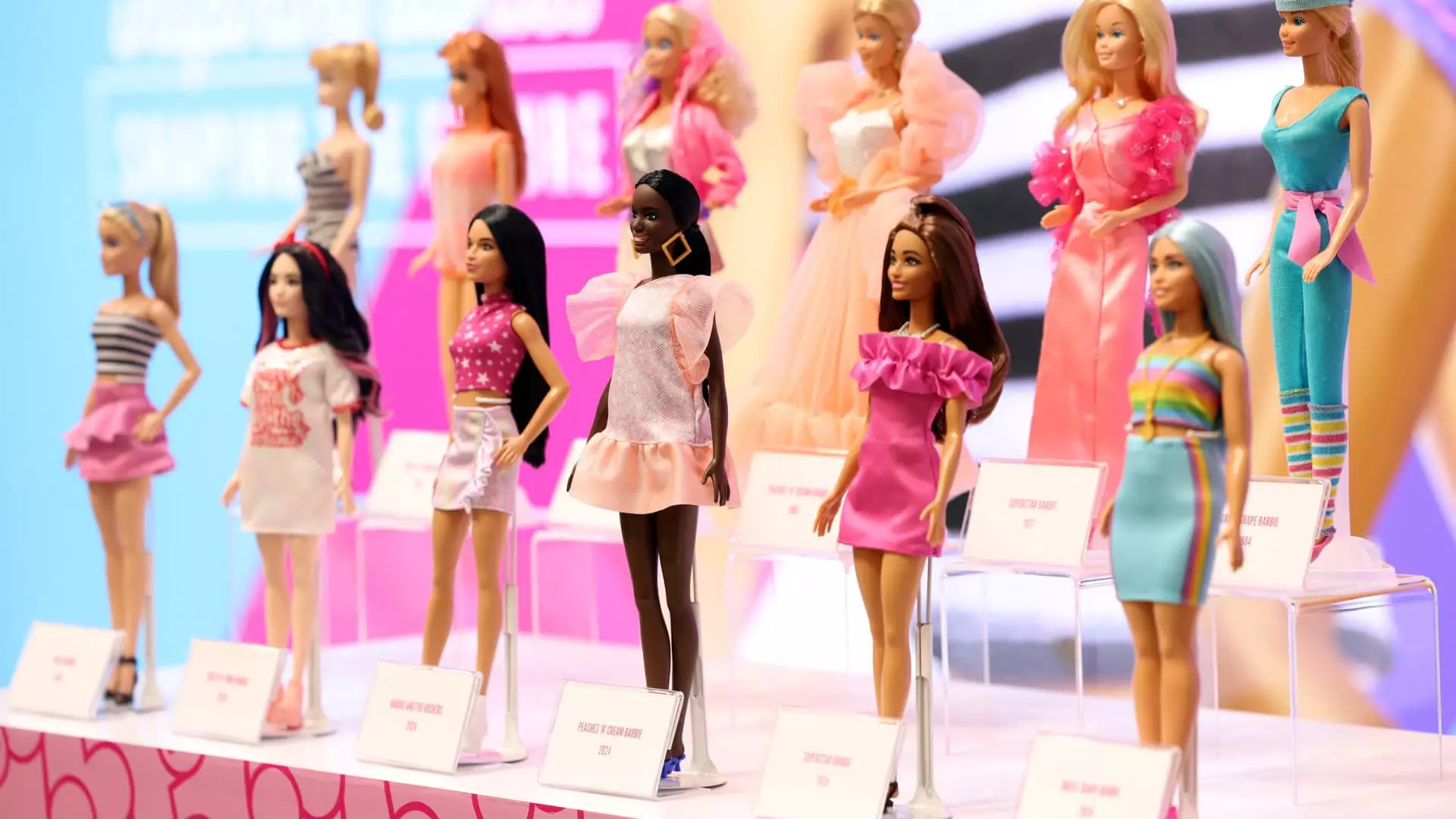In an economy riddled with uncertainties stemming from trade disputes and tariffs, the toy industry finds itself at a crossroads. Recently, Mattel, the global toy giant responsible for beloved brands such as Barbie and Hot Wheels, revealed plans to potentially increase the prices of its products. This decision aligns with the broader context of tariffs imposed by the administration of former President Donald Trump, specifically aimed at goods imported from China. With approximately 40% of Mattel’s toys being manufactured in this region, the implications of these tariffs carry significant weight for both the company and consumers.
The economic environment established by these tariffs illustrates an intricate dance between manufacturing, supply chain logistics, and pricing strategies. On an earnings call, Anthony DiSilvestro, Mattel’s finance chief, emphasized that mitigating the impact of tariffs would involve a multifaceted approach. This includes optimizing their supply chain operations and contemplating price increases as a last resort. Their overarching goal resonates with many businesses: to strike a balance between maintaining consumer loyalty and protecting profit margins.
The immediate challenge presented to companies like Mattel revolves around the pressure to manage increasing costs without alienating customers. The imposition of a 10% tariff on imports from China comes at a pivotal moment, affecting a range of sectors but hitting consumer goods particularly hard. This scenario echoes some of the concerns expressed by economists, who predict that the tariffs will inevitably lead to higher retail prices for consumers.
Importantly, while tariffs create an environment ripe for price modifications, companies are not without options. Mattel’s executives have shared an understanding of the delicate dynamics with their retail partners, advocating for decisions that consider the consumer’s perspective. Nevertheless, the potential for price hikes looms large, as companies may opt to pass some of the costs onto consumers if they cannot fully transfer the financial burden down the supply chain.
The geopolitical climate further complicates the situation for toy manufacturers. Shortly after tariff announcements regarding Canada and Mexico, the respective governments adjusted their border security protocols, prompting Trump to suspend the intended 25% duties for 30 days. Such negotiations could signal a willingness for diplomatic resolutions; however, the unpredictability of these agreements creates challenges for businesses that rely on stable trade conditions.
In the case of China, the ongoing trade tensions leave companies like Mattel in a precarious position. With around 80% of their goods sourced from Asia, a failure to negotiate favorable terms could result in sustained elevated prices that would ripple through the economy. This uncertainty highlights a fundamental vulnerability for toy manufacturers: reliance on specific regions for essential production capabilities.
Despite the backdrop of tariffs, Mattel appears poised to adapt strategically. The company operates factories in seven countries, which grants it a degree of flexibility to pivot operations and explore alternative sourcing avenues. Projections suggest that by 2027, the company’s sourcing from both Mexico and China may reduce to less than 25% of total global production, down from around 50% currently.
This juxtaposition of finding alternate production routes while maintaining consumer satisfaction presents an ongoing challenge. The competitive landscape requires a nimble approach, where Mattel, and other toy manufacturers, must weigh the cost of production against consumer price sensitivity carefully.
The implications of tariffs on the toy industry are multi-layered and complex. As Mattel and others navigate the shifting tides of tariffs and trade policy, they must remain vigilant in adapting their strategies. The interplay between pricing, supply chain management, and geopolitical factors will determine the future not only for Mattel but for the broader toy sector as a whole. The coming years will reveal how these dynamics evolve and what consumers ultimately experience at retail.

